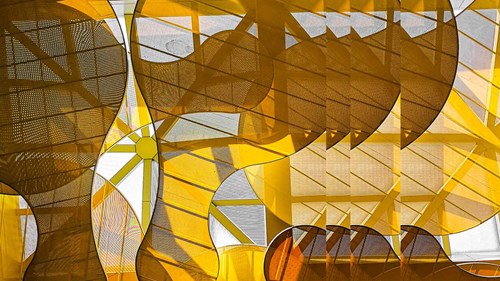Starbucks Coffee is the only one that "rocks"
In its judgment of 16 January 2018, the General Court (“EGC”) finally sided with Starbucks Corp. (“Starbucks”) and decided that the conflicting trade marks



In 2013, an application for the European Union trade mark (EUTM) 


The opposition was rejected and Starbucks' appeal before EUIPO's Fourth Board of Appeal was dismissed. It was confirmed that the services at issue were identical. However, the EUIPO was of the opinion that the signs were dissimilar since they only coincided in descriptive or non-distinctive elements, namely the word “COFFEE”, the black circular device with white elements and the letter type used.
The EGC did not agree with the EUIPO's assessment of Article 8(1)(b) EUTMR ruling out any (even a low) similarity between the marks and annulled the decision in this respect. Regarding the visual comparison of the signs, the EGC found that they have the same general appearance, both being circular devices consisting of two parts with a surrounded central part, with the two word elements having the same structure and showing two white stars and musical notes, respectively. According to the EGC, the similarity linked to the general appearance of the signs is further strengthened by the use of the same colours (black and white) and the use of the same font for the word elements “STARBUCKS COFFEE” and “COFFEE ROCKS”. Considering that the mark applied for does not refer to any colour in particular, it could be used in the colour of the owner's choice, including in the black, green and white shades of the earlier trade marks 
Also contrary to the EUIPO, the fact that the signs had the word “COFFEE” in common had to be taken into account, even though that term is descriptive of the goods and services concerned. Even if, following the EUIPO's argumentation, the signs were in fact completely different in their distinctive and dominant elements, it cannot be held that all the other components (especially the above-mentioned similarities) are negligible. From a phonetic point of view, there are admittedly differences in the way the signs “STARBUCKS COFFEE” and “COFFEE ROCKS” are pronounced. However, the EGC does not agree with the EUIPO that the presence of the word “COFFEE” and the similar ending of the words “ROCKS” and “STARBUCKS” for the English-speaking public are not capable of making the signs phonetically similar. As regards the conceptual comparison of the signs, on account of the general appearance of the signs and the common word “COFFEE”, it cannot be ruled out that the relevant public will associate both signs with the concept of a “coffee house”.
Finally, the EGC reminded of the fact that Article 8(5) EUTMR (other than Article 8(1)(b) EUTMR) merely requires a similarity capable of leading the relevant public to make a connection (i.e. establish a link) between the signs at issue, and not a similarity capable of leading that public to confuse those signs. Thus, the protection which that provision provides for marks with reputation may apply even if there is a low degree of similarity between the signs at issue. The EGC concluded that the EUIPO, in its examination of Art. 8(1)(b) EUTMR, had erred in denying any similarity between the signs and in refusing to assess the likelihood of confusion globally on the sole ground that the signs were dissimilar. In those circumstances, and for the same reasons, the EUIPO should not have refused to assess the grounds set out in Article 8(5) EUTMR. Therefore, the EGC also annulled the decision in this regard.
In sum, the following two points can be taken from this judgment: Firstly, the threshold of similarity is very low. When comparing the signs as a whole, descriptive/non-distinctive elements of a mark can only be seen as negligible in the overall impression if other elements are likely to dominate the relevant public’s recollection of that mark. Secondly, the EGC confirmed again that, even though Article 8(5) EUTMR requires a lower degree of similarity, the assessment of the similarity between two marks under Article 8(1)(b) EUTMR is the same as under Article 8(5) EUTMR.

.jpg?t=a-s&arw=16&arh=9&arm=focuspoint&w=500)







